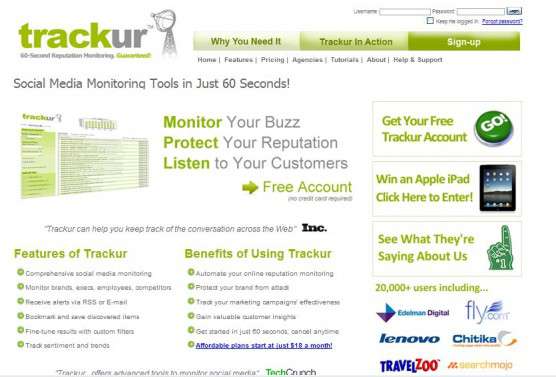Having become proficient in the use of social media, you are likely recognizing that a great deal of time can be spent maintaining a social media site. After all, tracking down hot topics, checking reports and doing analysis can be time consuming. Fortunately, others have already recognized this, and have created a variety of tools to help make managing a social site easier and more productive for the business owner.
Consequently, there is no need for you to spend excessive amounts of time researching,
tracking and analyzing your sites; rather begin using these 5 social
media tools:
- MajesticSEO offers
link analysis and acquisition counts. Site owners can get full reports
on their website. There is also a paid version that gives you link
details on your competition and helps you find high impact links for
SEO. - Andy Beal’s Trakur monitors
social media sites giving you insight into what others are saying about
your brand, identifies their influences and shoes where they are
commenting
- SocialMention is
a free Real Time and social search tool that crawls social media sites.
It has a variety of options, outputs and tools that help you create
spreadsheets to track your progress. - PostRank shows
you what topics are hot, so you can include information about the most
popular search queries. - bit.ly is
a URL shortener that allows you to create a domain name for Twitter and
Facebook that is recognized as your own.
Tips for Building a Social Media Network
Now that you have your tools and apps in place for your social media profiles, you will want to make sure your fans and followers know as much as possible about what your business can do for them. The tips below will help:
- Make sure people know about your social media accounts. Link them through your blog, website, newsletter, signature line, etc. Pages such as Flavors.me are a great way to get all your sites listed in one location.
- Pick an avatar or custom background that stands out as this will help people recognize you.
- Be authentic and accessible- people want to know who they are dealing with.
- Be polite and helpful- Offering a service or giving advice or free consultations shows expertise and builds a good business reputation.
- If possible, spend some time each day (some people schedule a set number of minutes) on your social media account. If you can’t do this- or don’t want to, then consider hiring someone to do this for you. The more people see "you" the more they will trust you. Note that the more strategic time (NOTE: Not playing games or sending goofy messages to your high school buddies) you invest into social media, the more benefits you will rea. Just having the account and letting it sit won’t do you any good, as it is SOCIAL media after all…
- Be persistent. Building business through social media will pay off, but you, or whoever you appoint, have to invest some time.
Using social media is proving to be one of the business owner’s best friends. Take time to make your business social media profiles benefit both you and your customers. You will soon see an increase in business. Whether you maintain the page yourself or hire Page Progressive to do it for you, you don’t want to miss the potential of social media – your competitors won’t. get started today!






